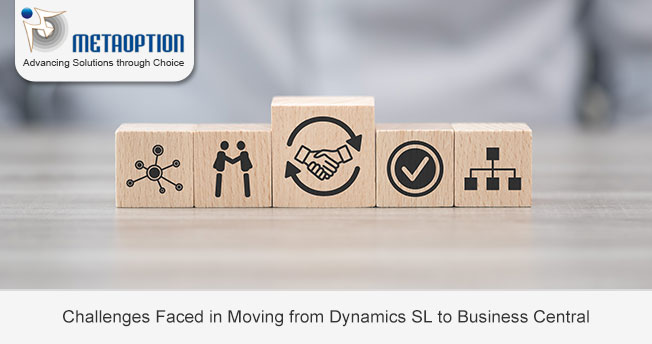In the ever-evolving landscape of business management software, the decision to transition from one system to another is often a strategic move aimed at improving efficiency, streamlining processes, and staying competitive in the market. One such transition that many businesses are considering or undertaking is the move from Microsoft Dynamics SL to Business Central. While this transition holds the promise of enhanced capabilities and modernization, it also comes with its fair share of challenges. Let’s delve into some of the key challenges faced by businesses as they navigate this transition journey.

The Key Challenges Faced in Moving from Dynamics SL to Business Central
Legacy Data Migration:
One of the foremost challenges in transitioning from Dynamics SL to Business Central is the migration of legacy data. Over the years, businesses have accumulated a vast amount of data critical to their operations, including financial records, customer information, inventory data, and more. Ensuring a seamless transfer of this data to the new system without loss or corruption is paramount. However, differences in data structures, formats, and functionalities between Dynamics SL and Business Central can pose significant hurdles during the migration process. Mapping data fields accurately, cleaning up redundant or obsolete data, and reconciling discrepancies require meticulous planning and execution.
Customization and Integration:
Many businesses rely on customizations and integrations within Dynamics SL to tailor the system to their unique workflows and requirements. As they transition to Business Central, ensuring that these customizations are effectively migrated or replicated becomes a major challenge. Business Central offers a different architecture and development environment compared to Dynamics SL, which may necessitate re-engineering or rebuilding customizations from scratch. Moreover, integrating Business Central with other existing systems such as CRM platforms, e-commerce portals, or third-party applications adds another layer of complexity, requiring thorough testing and validation to ensure seamless interoperability.
User Training and Adoption:
Transitioning to a new system entails a learning curve for users accustomed to the functionalities and interface of Dynamics SL. Business Central introduces a modern user experience with a different navigation structure, features, and workflows. Ensuring that users receive adequate training and support to familiarize themselves with the new system is essential for smooth adoption. However, managing resistance to change, addressing user concerns, and providing ongoing support post-implementation can be challenging, particularly in organizations with diverse user roles and varying levels of tech proficiency.
Business Process Alignment:
Aligning existing business processes with the capabilities of Business Central poses another significant challenge during the transition. While Dynamics SL may have served the organization’s needs well in the past, Business Central offers a more comprehensive suite of functionalities and advanced capabilities. This necessitates a thorough review and potentially a redesign of existing processes to leverage the full potential of the new system. Balancing the need for process optimization with continuity and minimizing disruptions to day-to-day operations requires careful planning, stakeholder engagement, and change management strategies.
Compliance and Regulatory Considerations:
For businesses operating in regulated industries or jurisdictions, ensuring compliance with industry-specific regulations and standards is paramount. Transitioning to a new ERP system like Business Central requires meticulous attention to compliance requirements, including financial reporting standards, tax regulations, data privacy laws, and industry-specific mandates. Failure to address these considerations adequately can result in compliance gaps, financial penalties, or reputational damage.
Winding Up: Dynamics SL to Business Central
In conclusion, the transition from Dynamics SL to Business Central presents businesses with a transformative opportunity to modernize their operations, enhance efficiency, and drive growth. However, navigating this transition journey is fraught with challenges, ranging from data migration and customization to user adoption and compliance. Also, by proactively addressing these challenges through meticulous planning, stakeholder engagement, and robust change management strategies, businesses can successfully navigate the transition and unlock the full potential of Business Central to drive their future success.
For more information and a tailored demonstration contact us today at Metaoption.


